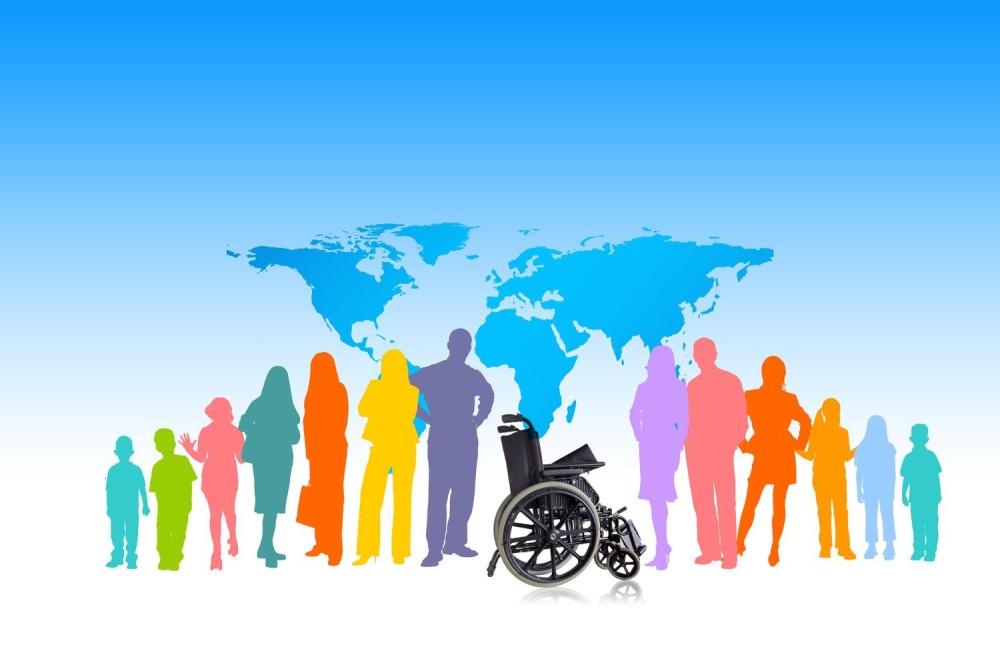(Photo Courtesy: Gerd Altmann from Pixabay | For Representational Purpose only)

Ngaugongbe (PwD)
Special Educator
Census is not just about counting numbers of people. The census decides who is seen by government’s planning, budgets and services. For Persons with Disabilities (PwDs), an accurate census is the doorway to rights guaranteed under law. But how well will Nagaland with its unique geography, social attitudes and administrative constraints record and recognise its disabled population this time around? If the enumeration process fails to capture the real number of Persons with Disabilities (PwDs) in Nagaland, the entire community will continue to be deprived of adequate representation in healthcare, education, accessibility, employment, and other welfare programs.
Across the world, disability is a reality for a large number of people. The World Health Organization estimates that around 15 to 16 percent of the global population lives with some form of disability. This shows us that disability is not rare but a normal part of human diversity. In India, 2011 Census recorded about 26.8 million or 2.21% of the population as disabled. Most experts considered this as an undercount. This is due to social stigma and limited training of field staffs that led to exclusions of many types of disabilities like developmental disabilities and other invisible ones. Policy and funding often follow census numbers, and such undercounting has direct negative effects on services for Persons with Disabilities (PwDs).
When we look at Nagaland’s 2011 Census picture, it is even more striking. The state reported 29,631 persons with disability, which is about 1.5% of its population. That number is far below both the global and national proportions and there is high likely that reflects underreporting rather than an unusually low incidence of disability. Geography, language diversity, social stigma and gaps in enumerator training makes accurate counting harder in states like Nagaland unless appropriate special steps are taken.
The law has also changed and now the people have better expectations. The Rights of Persons with Disabilities (RPwD) Act, 2016 replaced the older Persons with Disabilities (Equal Opportunities, Protection of Rights and Full Participation) Act, 1995 law and brought India with broader and better standards for the welfare of the disabled community. The RPwD Act 2016 expands the list of recognised disabilities, strengthens equality and accessibility obligations and creates duties for government to better plan, report and act for Persons with Disabilities (PwDs). Notably, the RPwD Act 2016 recognises 21 types of disability, moving beyond and replacing the narrower list used earlier. This wider and rights-oriented approach makes accurate and disaggregated data essential. Therefore, the state cannot meet its legal duties without counting people correctly.
For the State, to meet both the spirit and letter of the RPwD Act 2016, the Census process must evolve in practical ways. The enumeration should capture how people manage everyday activities, including seeing, hearing, moving, thinking, communicating and other mechanisms that conditioned disability, rather than only on obvious or labelled impairments. The state must involve disability experts, rehabilitation professionals and Disabled People’s Organisations (DPOs) when designing the field approach, translating questions and testing them in local languages and contexts. Including people with lived experience in planning and training helps ensure questions are asked with sensitivity and that families feel safe to report disabilities.
Training of enumerators is crucial. Enumerators must understand the broader list of 21 disabilities under RPwD 2016 and be able to recognise functional difficulties, use clear local language and communicate without stigma. They should be trained using real examples, role-plays and guidance created with experts from Nagaland, so that the training matches local culture and dialects. If enumerators are not confident or respectful, households may hide information and the state will again undercount its own people (disabled people).
The upcoming Census should go hand in hand with strong public awareness efforts that clarify the importance of disability-related questions and show how the information will contribute to better services and policies. Trusted community platforms such as churches, village councils, grassroots DPOs (Disabled People Organisations) and health workers can play a key role in sharing this message in ways people relate to. Meaningful involvement of Persons with Disabilities and their organisations in planning, monitoring and evaluation ensures more reliable and relevant outcomes. With Nagaland’s active disability groups already in place, collaboration with them offers a practical path toward more accurate data and stronger rights protection.
The upcoming census offers Nagaland an opportunity to shift from neglect to genuine recognition of Persons with Disabilities (PwDs). The underreported figures from 2011 highlight the urgent need for improvement. Embracing inclusion as per the RPwD Act 2016, and engaging disability experts and Disabled people themselves in both planning and training that ensures strong, culturally relevant awareness campaigns in the state can generate accurate data that leads to meaningful services and restores dignity to thousands. Without these steps, Nagaland will risks repeating past mistakes leaving People with Disabilities invisible in statistics and excluded from policies and public life for another decade.



